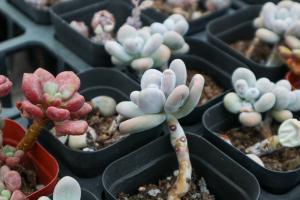Introduction
Saltwater plants are a unique type of vegetation that have adapted to living in saline environments. These plants can survive in water that has a high salt concentration, which would be lethal to most other plant species. In this article, we will explore the reasons why saltwater plants can survive in saltwater.
The Evolution of Saltwater Plants
Saltwater plants have evolved over time to adapt to the rigorous conditions of saltwater. These plants have developed specialized mechanisms and traits that help them survive in high-salinity environments. One of the most notable adaptations is the ability to tolerate salt concentration that would be toxic to other plants. This adaptation has been critical to the survival and proliferation of saltwater plants.
Adaptive Mechanisms of Saltwater Plants
One of the most important mechanisms that saltwater plants use to survive in saltwater is a process called osmoregulation. Osmoregulation allows these plants to control the amount of sodium and other ions in their body fluids. They do this through the use of specialized cells that pump excess ions out of their tissues, preventing them from accumulating to dangerous levels.
Another critical adaptation of saltwater plants is the ability to store water and nutrients efficiently. Saltwater plants have structures called vacuoles that can store a large volume of water and nutrients. These vacuoles allow the plant to maintain its internal environment and avoid dehydration, even in high-salinity conditions.
Types of Saltwater Plants
There are several types of saltwater plants, each with unique adaptations and traits that enable them to live in saline environments. Seagrasses, mangroves, salt marsh plants, and halophytes are some of the most common saltwater plants.
Seagrasses are an essential component of coastal ecosystems and provide habitats for a wide range of marine life. They have evolved special mechanisms to deal with the high-salt concentrations in seawater, including the ability to store salt in their tissues.
Mangroves are another type of saltwater plant that grows in intertidal zones along coasts. These plants have aerial roots that allow them to absorb oxygen from the air while also taking in water and nutrients from the surrounding saltwater.
Salt marsh plants are found in brackish swamps and marshes and are adapted to fluctuating water levels and high levels of salinity. These plants have dense root systems that anchor them in muddy soil and provide protection against erosion and other environmental stresses.
Halophytes are a diverse group of salt-tolerant plants that can grow in a wide range of saline environments. They have evolved specialized mechanisms to cope with high salt concentrations, including the ability to accumulate salt in their tissues without being harmed.
The Importance of Saltwater Plants
Saltwater plants play a critical role in coastal ecosystems around the world. They provide habitat and food for a wide range of marine life, including fish, birds, and invertebrates. They also help to stabilize coastlines and prevent erosion, filtering pollutants and reducing the impact of storm surges and tidal waves.
Saltwater plants also play a critical role in carbon sequestration and climate change mitigation. These plants store large amounts of carbon in their tissues, keeping it out of the atmosphere and reducing the impact of greenhouse gas emissions.
Conclusion
In conclusion, saltwater plants are a vitally important part of coastal ecosystems around the world. They have evolved specialized adaptations that enable them to thrive in high-salinity environments, and they provide critical habitat and food for marine life. The importance of saltwater plants cannot be overstated, and it is essential that we protect and preserve these unique and valuable species.

 how many times do yo...
how many times do yo... how many planted tre...
how many planted tre... how many pine trees ...
how many pine trees ... how many pecan trees...
how many pecan trees... how many plants comp...
how many plants comp... how many plants can ...
how many plants can ... how many plants and ...
how many plants and ... how many pepper plan...
how many pepper plan...




























